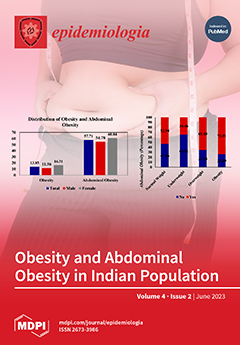Open AccessArticle
Baseline Seroprevalence of SARS-CoV-2 Specific Antibodies in Hot Spot Areas of Great Tunis, up to 3 Months Post Disease Onset in Tunisia
by
Sonia Dhaouadi, Hejer Letaief, Aicha Hechaichi, Mouna Safer, Rym Moussa, Ridha Bouhali, Fethi Letaief, Latifa Abdelkader, Hamida Ben Salah, Nawel El Mili, Mongi Hammami, Khouloud Talmoudi, Yves Souteyrand, Pierre Nabeth, Mohamed Kouni Chahed and Nissaf Bouafif ép Ben Alaya
Viewed by 1828
Abstract
The extent of the SARS-CoV-2 circulation and the COVID-19 epidemic in Tunisia three months after virus circulation was unknown. The aim of this study was to determine the extent of SARS-CoV-2 infection among household contacts of confirmed COVID-19 cases living in Hot spot
[...] Read more.
The extent of the SARS-CoV-2 circulation and the COVID-19 epidemic in Tunisia three months after virus circulation was unknown. The aim of this study was to determine the extent of SARS-CoV-2 infection among household contacts of confirmed COVID-19 cases living in Hot spot areas of Great Tunis, Tunisia by estimating the seroprevalence of antibodies anti SARS-CoV-2 and to identify factors associated to seroprevalence at the first stage of the pandemic in order to guide decision making and to constitute a baseline for further longitudinal analysis of protective immunity to SARS-CoV-2. The National Observatory of New and Emerging Diseases (ONMNE), Ministry of Health Tunisia (MoH), with the support of the Office of the World Health Organization Representative in Tunisia and the WHO Regional Office for the Eastern Mediterranean (EMRO)), conducted a household cross-sectional survey on April 2020 in Great Tunis (Tunis, Ariana, Manouba and Ben Arous). The study was based on the WHO seroepidemiological investigation protocol for SARS-CoV-2 infection. SARS-CoV-2 specific antibodies (IgG and IgM) were qualitatively detected using a lateral immunoassay that detect SARS-CoV-2 nucleocapsid protein and administered by the interviewers. The included subjects were confirmed COVID-19 cases and their households contacts resided in hot spot areas (cumulative incidence rate ≥ 10 cases/100,000 inhabitants) of Great Tunis. Results: In total, 1165 subjects were enrolled: 116 confirmed COVID-19 cases (43 active cases and 73 convalescents cases) and 1049 household contacts resided in 291 households. The median age of participants was 39.0 with 31 years’ interquartile range (Min = 8 months; Max = 96 years). The sex ratio (M/F) was 0.98. Twenty-nine per cent of participants resided in Tunis. The global crude seroprevalence among household contacts was 2.5% (26/1049); 95% CI 1.6–3.6%, 4.8%; 95% CI 2.3–8.7% in Ariana governorate and 0.3%; 95% CI 0.01%–1.8% in Manouba governorate. In multivariate analysis, the associated factors independently related to seroprevalence were age ≥25 years (aOR = 5.1; 95% CI 1.2–22.0), history of travel outside Tunisia since January 2020 (aOR = 4.6; 95% CI 1.7–12.9), symptomatic illness in the previous four months (aOR = 3.5; 95% CI 1.4–9.0) and governorate of residence (
p = 0.02). The low seroprevalence estimated among household contacts in Great Tunis reflect the effect of public health measures early taken (national lockdown, borders closed, remote work), the respect of non-pharmaceutical interventions and the efficacy of COVID-19 contact-tracing and case management at the first stage of the pandemic in Tunisia.
Full article
►▼
Show Figures





